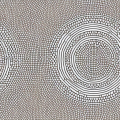The 30-60-90 triangle and the unit circle are two mathematical concepts that are closely related and used in many branches of mathematics, physics and engineering. In this article, we’ll explore their definitions, properties and uses, as well as provide examples of how they can be applied to problems.
Definition of the 30-60-90 Triangle
A 30–60–90 triangle is a type of right triangle whose angles measure 30°, 60° and 90°. The longest side of the triangle, the hypotenuse, is always equal to twice the length of the shortest side, the opposite side of the 30° angle. The other side of the triangle is always equal to the square root of 3 times the length of the opposite side.
It is possible for this triangle to be scaled up or down by any factor, so long as the ratios of side lengths remain unchanged. This scalability is why we find so many applications for it in the sciences.
Definition of the Unit Circle
A unit circle is a two-dimensional representation of a circle centered at the origin with its radius equal to 1. In a unit circle, all points on the circumference have a distance of exactly 1 from the origin. It is the basis for studying many important topics in mathematics, such as trigonometry.
Properties of the 30-60-90 Triangle
Since angles in a 30-60-90 triangle must add to 180°, we know that the 90° angle must be opposite the longest side, while the other two angles must be opposite the two shorter sides. Further, since each angle is fixed, we can calculate the ratios between sides of the triangle.
The ratio between the longest side and the shortest side is always 2:1. The ratio between the intermediate side and the shortest side is always $\sqrt{3}:1$.
Properties of the Unit Circle
The central angle of any point on the unit circle will be equal to its arc length which will be equal in turn to its corresponding angle measure in radians. So, for example, if an angle θ on the unit circle has arc length 1 then its angle measure in radians must be 1 too. Another useful property of the unit circle is that all points on the circumference (except for (0,0)) have coordinates whose absolute values are equal and are always 1.
How to Calculate the Sides of a 30-60-90 Triangle
Given two side lengths of a 30–60–90 triangle, it is always possible to find the third side length. For example, if you know that your shortest side is 3, you can easily find that your longest side is twice as long at 6 and your intermediate side is $\sqrt3 \cdot 3 = 3\sqrt3$. Alternatively, if you know that your longest side is 4, then you can quickly deduce that your shortest side will be 2 and your intermediate side will be $2\sqrt3$.
How to Calculate Angles in a 30-60-90 Triangle
The angles of a 30-60-90 triangle are always 30°, 60°, and 90° and do not depend on any side lengths. However, it is useful to know how these angles can be calculated using either unit circle or Sine/Cosine functions. First, using trigonometry formulas, we have:
- $\cos \theta = \frac{b}{c}$ and $\sin \theta = \frac{a}{c}$ where a, b and c are side lengths.
For a 30-60-90 triangle with c as the hypotenuse, we can rearrange these equations as follows:
- $\cos 30 = \frac{c}{2}$
- $\sin 60 = \frac{\sqrt3 \cdot c}{2}$
Alternatively, the Pythagorean theorem can be used to calculate angles, provided that one has access to a unit circle. All you need to do is draw an arc from your triangle corner away from the origin at a distance equal to your hypotenuse length, c. Doing this will create an angle equal to 30° or 60° depending on which corner you are using.
How to Calculate Points on a Unit Circle
It is possible to calculate points on the unit circle using only their corresponding angle measure in radians. All you need to do is use basic trigonometric functions and their corresponding ratios. For example, given an angle measure θ, its x coordinate can be found using:
- $x = \cos \theta$
and similarly, its y coordinate can be calculated with:
- $y = \sin \theta$
Applications of the 30-60-90 Triangle and Unit Circle in Math and Science
The 30-60-90 triangle has a number of practical applications in physics and engineering. It is commonly used for calculations involving angles and forces around them. It is also used to calculate angles and sides of other triangles when given certain values of angles or sides. For example, it can be used to find missing angles or sides in any right triangle.
Similarly, unit circles can also be used in many branches of science ranging from physics to engineering to geology. They are especially useful for researching topics related to trigonometric functions. In addition, they are used in optics and much more.
Examples of Problems Solved Using the 30-60-90 Triangle and Unit Circle
Let’s look at some examples to illustrate how you can use what we have learned so far. Let’s say you have a triangle with a 60° angle and a hypotenuse of 4. You can use trigonometric functions on your unit circle to figure out that your missing side must have length 2√ 3. Alternatively you could use ratios to deduce that your missing side must also be equal to $4/2=2$.
Now let’s look at another example involving angles. You are given a right triangle with sides 3, 4 and 5. Using the Pythagorean theorem on your unit circle, you can calculate that the third angle must measure 90° since $3^2 + 4^2 = 25 = 5^2$.





